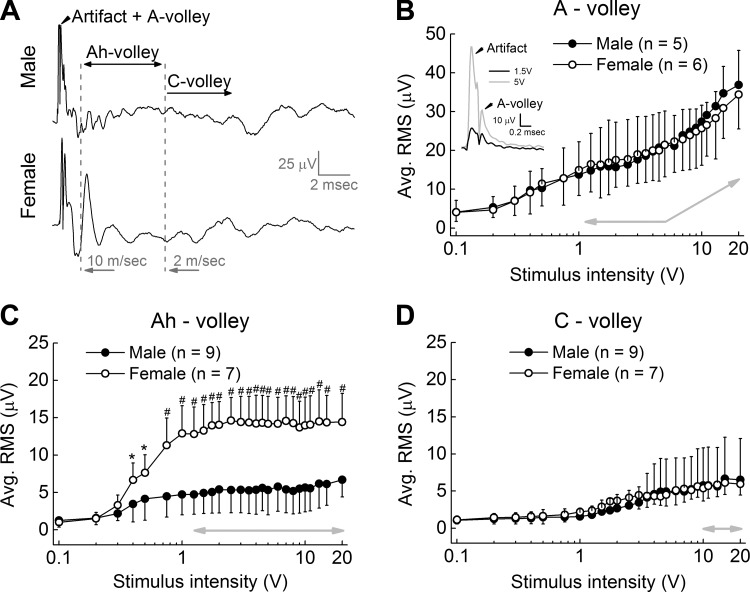Fig. 4.
Ah-type afferent CAP is stable and persistent across suprathreshold stimulus intensities. A: representative CAP traces from the aortic depressor nerve (ADN) of male and female rats at high-intensity (20 V) stimulation. Starting at intensities greater than ∼5 V, the stimulus artifact extends into the recording epoch associated with A-type fibers (Artifact + A-volley). B: as a result, beyond an initial saturation plateau the RMS magnitude of the CAP from the faster conducting (> 10 m/s) A-type fibers increases proportionally with increasing stimulus intensity (note inset and gray arrows). C: the epochs associated with the CAP arising from the slower-conducting (10–2 m/s) myelinated Ah-type fibers occur well beyond the duration stimulus artifact. As a result, the RMS magnitude of the Ah-volley from female rats is essentially the same magnitude across both low and high stimulation intensities and consistently greater than the Ah-volley from male rat (note horizontal gray arrow). D: the RMS magnitude of the much slower (<2 m/s) unmyelinated C-type fibers steadily increased with stimulus intensity until ∼10 V, beyond which there was little increase with stimuli up to 20 V. Data are means ± SD. *P < 0.05, #P < 0.01.

